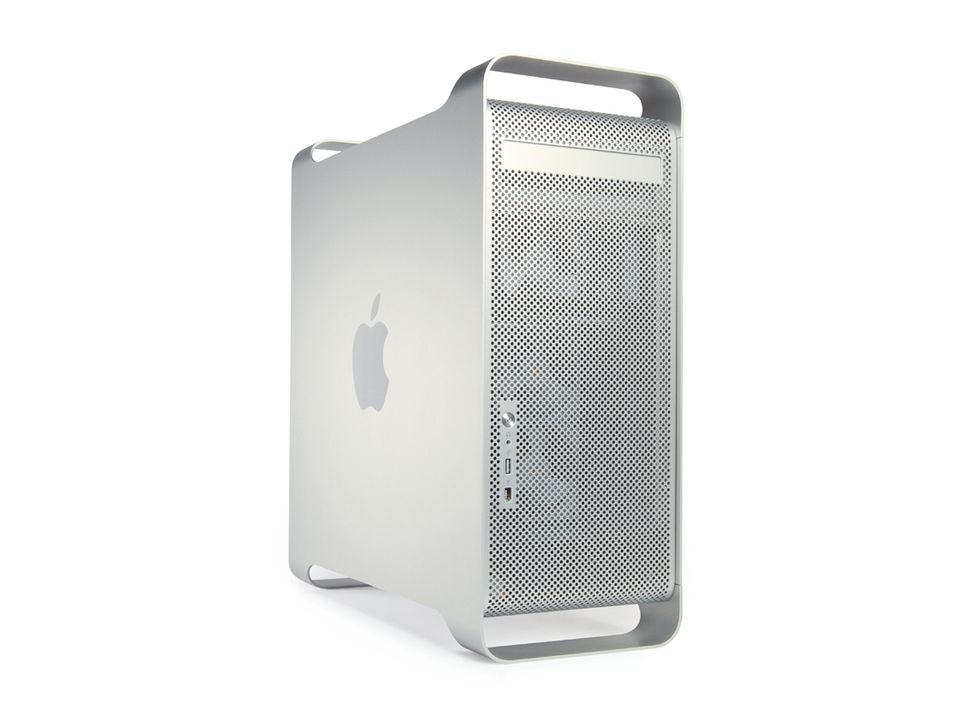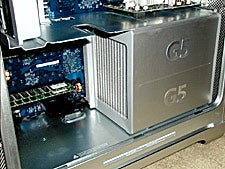

The snag with having lots of measurements is what you can do about them.
#WHICH POWER MAC G5 MODELS HAD LIQUID COOLING INSTALL#
If you’d rather make purchases through Apple’s App Store, you can buy Temperature Gauge there, run it once so that your Mac ‘registers’ it, then download and install TG Pro as a free upgrade. The most comprehensive tool seems at present to be Tunabelly’s TG Pro, which costs around $16. As each model has different sensors in different locations, keeping up with new models is a nightmare for those who develop these tools, so many end up just reading a selection of the sensors available. There are many utilities available which can display data from the multitude of different sensors built into your Mac.

There are times, though, when it is useful to be able to see what different sensors are reading, whether they are changing much, and what speed the fans are operating at. Like all computer manufacturers, Apple does not think that you want to be troubled with readings from a battery of internal temperature sensors, but want to leave its hardware to get on with the job. It will also age components containing mechanical parts, such as hard disks and optical drives, more rapidly. Hardware also lasts longer when it stays at a fairly constant temperature: repeatedly heating up and cooling down causes solder to age, and can lead to failed connections. Even if the sunlight feels pleasant to you, and does not impair your use of the display, it can cause hardware problems over time. Such local warming is not taken into account in designing the cooling system, and can lead to dangerously high temperatures in some components. Even in the more temperate zones, during the middle of a summer’s day, sunlight falling on a computer case will cause it to become much warmer than it would be in the shade. One particular hazard is solar radiation. If their underside rests on soft, insulating materials such as a wool blanket, then they may run hotter, using their fans more, which will also shorten their useful time running from battery alone. Laptops use the surface of the case for heat exchange, as you will have noticed if you ever used older hard-drive models on the bare flesh of your thighs, particularly after sunbathing. Thankfully all more modern models rely on air, with internal fans to help when the demands are greatest.ĭesktop models usually have air intake and outlet zones if these are obstructed, or if the intake is drawn from pre-heated air, it can compromise cooling function, and that Mac will at least run its fans excessively, and may overheat. The Cray-2 supercomputer used a special non-conductive cooling fluid, and some desktop computers have also used liquid cooling, including the fastest of Apple’s Power Mac G5 models from back in June 2004. At the same time, they are often squeezed onto small daughterboards or into expansion slots, where they may not enjoy as good cooling airflow as the CPU.Ĭooling systems for computers can be huge and very elaborate. With modern GPUs and other chips to accelerate their performance, they are often the hottest parts of a computer. Graphics cards are another special problem. If you want your hard disks to last, they should be kept within their intended operating temperature range. One of the ways in which drive manufacturers estimate the likely life of their products is to accelerate their ageing by deliberately running them at higher temperatures.

Hard drives are also notoriously temperature-dependent: a hard disk running hot is at greater risk of failure, and many drives which are about to fail start to run hotter than they should. So to operate reliably at their rated clock speed, processors need to be cooled to the right temperature range. The faster that you drive it, and the hotter it gets, the more errors occur, until the processor stops working, and may suffer physical damage. The ‘speed’ or clock rating of an individual processor is that at which it will operate reliably. Processors are a good case: you can run a 2 GHz processor faster (at a higher clock speed, ‘overclocked’), but it then gets hotter. The components themselves generate heat, which needs to be dissipated, and as a general rule the more power that a component consumes, the more heat it will produce. It certainly doesn’t seem like it today, but summer is coming to the northern hemisphere at last, and should it ever turn hot, we need to think about keeping our Macs cool.Īll electronic components have optimal temperature ranges, and one of the hardware engineer’s many challenges is to design component layouts and cooling systems which maintain every part of a computer at the right temperature.


 0 kommentar(er)
0 kommentar(er)
